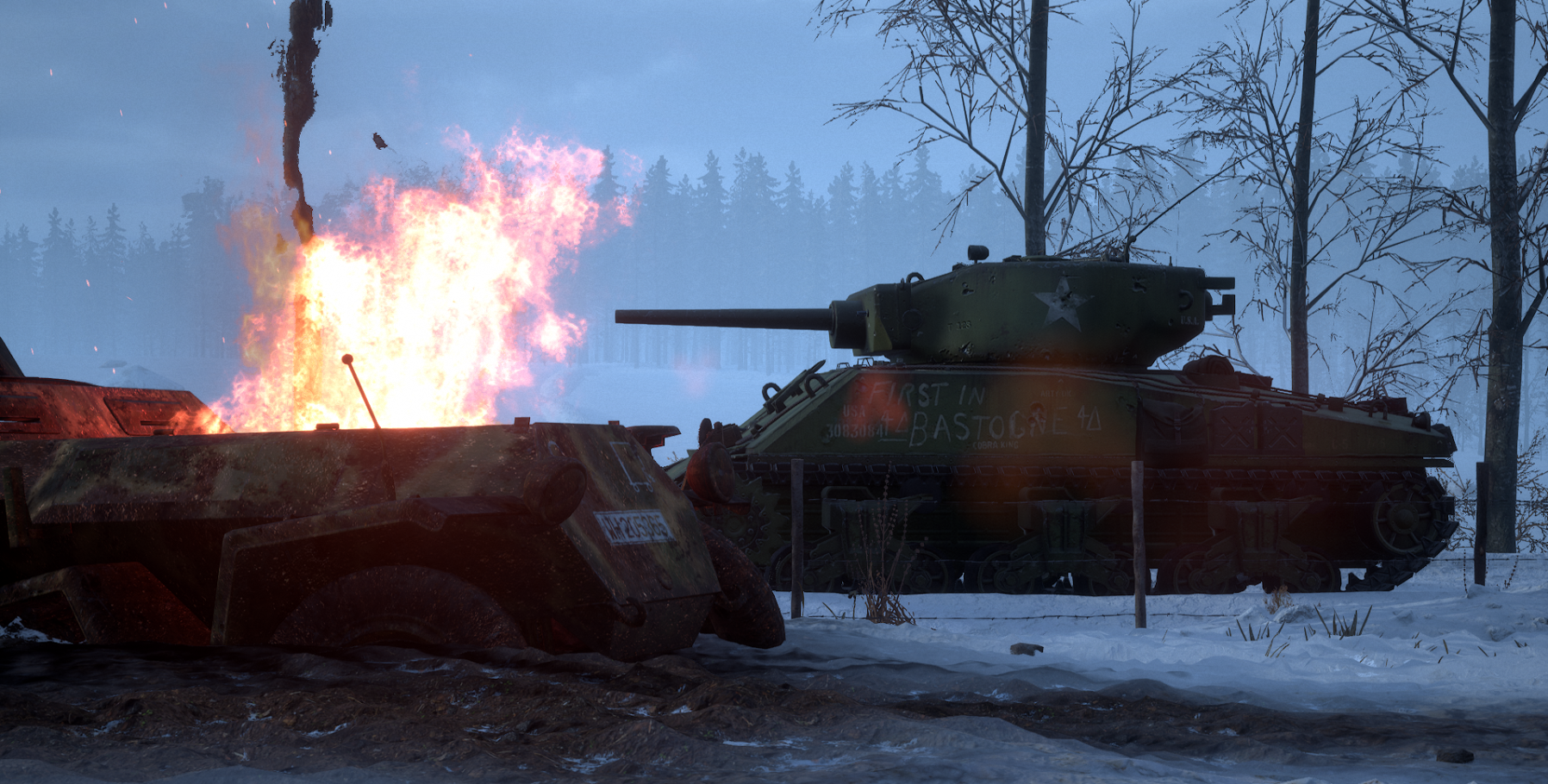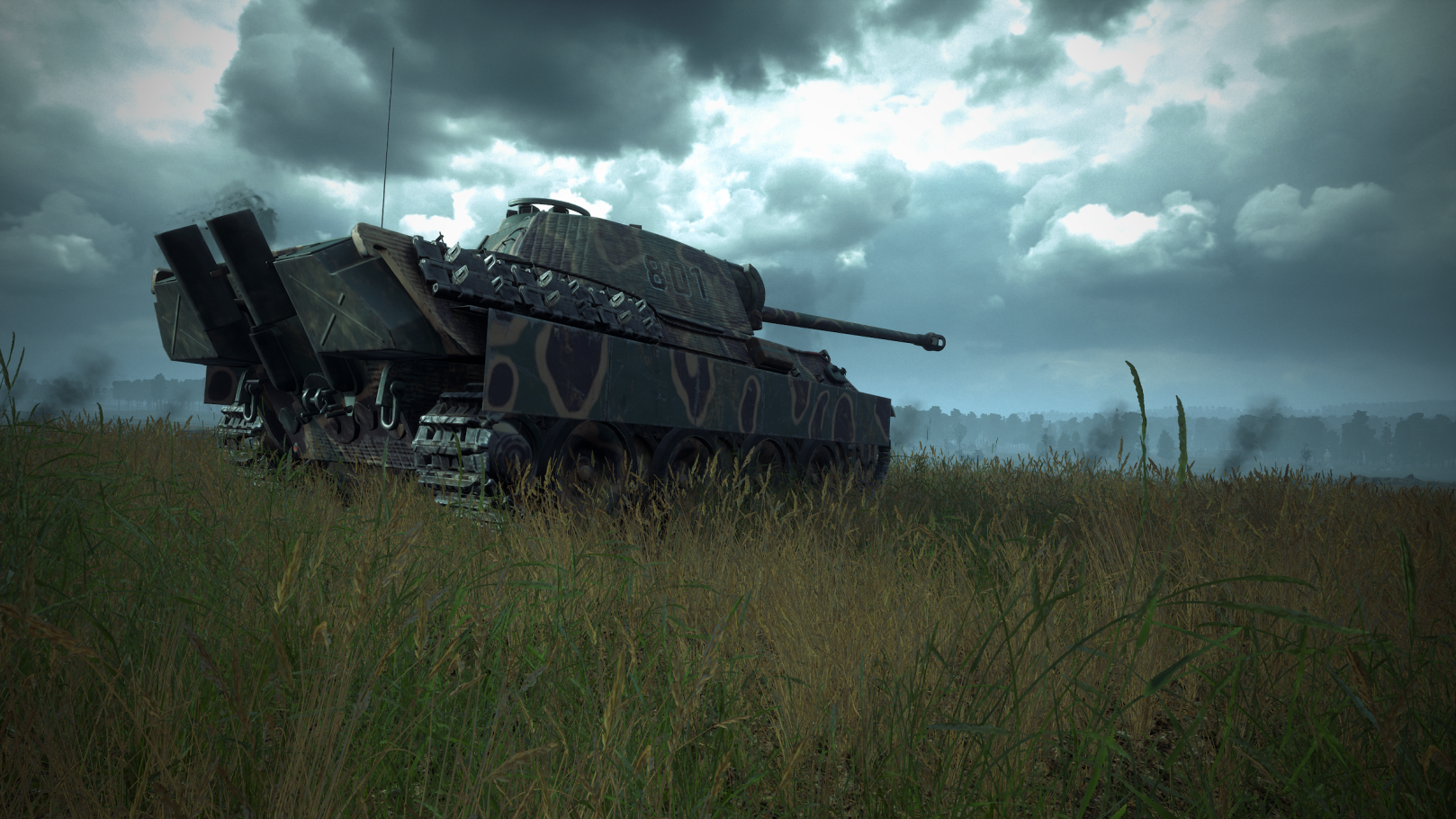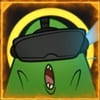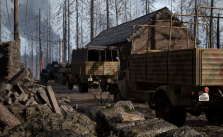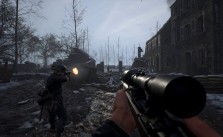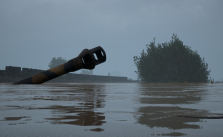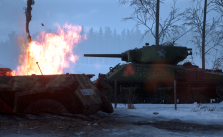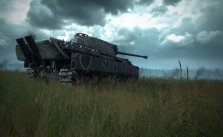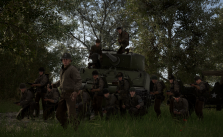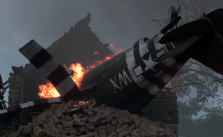Hell Let Loose – Ultimate Beginner’s Guide: Tips for New Players
Hell Let Loose is not your typical run and gun FPS shooter. It’s a special cuisine for the select few who enjoy the thrill of real-time FPS strategy at the highest possible level. It’s a breath of fresh air in a genre that has become saturated with run-of-the-mill mindless games sporting cliched gimmicks.
Hell Let Loose is hard to master and is considered an acquired taste by the majority of the gaming community because of its steep learning curve. However, we want to change it by creating small biteable chunks of information to help you learn the ropes faster and enjoy this iconic game. So without further ado, let’s begin.
Getting Started with Hell Let Loose: The Basics
- The key to playing and possibly winning is to maintain constant communication. Orchestrating 50 players is not easy, but that’s what makes the game even more exciting.
- There are only two game modes: Offensive and Warfare, with two modes in development, Invasion, and Campaign.
- Hierarchy List: Commander>Squad Leader>Soldiers. Commanders do not directly partake in battle but help coordinate the 50 player team by staying in constant communication with the squad leaders.
- Each squad/unit can consist of a maximum of six soldiers (including the Officer) and is divided into three categories: Infantry, Armor, and Recon.
- Check server rules before joining.
- Small icons near the squad name that signify their purpose. They are Offense, Defense, Logistics, and Artillery. A microphone icon means you must communicate with others via your mic.
- Soldiers with green icons over their heads are in your squad so stick with them. The blue icon means they are in your team but not in your squad.
- The goal is to capture objectives in the map. To begin capturing, you need to move into the objective grid. The team with the most soldiers will begin capturing the objective. A shaded circle within the objective grid represents a strongpoint which doubles the weight of soldiers within it.
Hell Let Loose setup and control tips and tricks for added advantage
- Enabling this feature will give you better frame rates but is only applicable on Steam. To enable it, go to your Steam Library, right-click on the game and go to properties. In the Launch Options box, enter ‘-dx12’ (without quotes) and close the window. Any lags you encounter upon launch will soon wear off after you’ve spun around a couple of times.
- Go to game options and set the nameplate view distance to somewhere between 250m to 500m. This feature helps avoid friendly fires. Unless you are a sniper, you’ll rarely hit targets beyond that mark, so it’s best to avoid the unnecessary on your screen.
- Set Shadow quality to low and switch off SSAO. Hell Let Loose is a resource-intensive game, and every frame rate counts. Enabling these options will exert pressure on your CPU and GPU, which could affect the gameplay if you are not using the latest hardware. So, set settings to low and adjust them until you reach the desired level of detail.
- Do mic check before starting your first game so that both you and your squad can efficiently communicate with each other.
- Avoid picking a server with high ping. Also, pick community servers over others since they will have admins to moderate the game to help with the new player experience. Other servers might contain cheaters, teamers, and in general toxic players who ruin the experience for everyone.
Hell Let Loose Character Customization and Loadout selection
- You can track the overall rank of your account and the ranks of each of your roles.
- Equip different cosmetics from back in the WWII days that unlock as you level your character. Some cosmetics are exclusive to specific roles.
- Loadouts allow you to customize your gameplay with various weapons and gear. For instance, the Engineer roles can either specialize in building or destroying fortifications on the battlefield.
Hell Let Loose Role descriptions: Which Roles are best for beginners?
- Commander – The Commander is responsible for controlling the entire tempo of the battle. They survey the battlefield to see what is going on and coordinate with the squad leaders. The commander can dismantle garrisons, call in airdrops, and spawn vehicles for transport and each of his abilities has a manpower, fuel, and munitions cost.
- Officer – The Officer is responsible for commanding a squad. They have a default loadout containing an SMG, pistol, grenades, smoke grenades, binoculars, bandages, and finally, a watch. They can place markers for their squad and build observation points to help squad members respawn in key locations, enabling them to join the battle sooner.
- Rifleman – Standard in-game role enabling you to construct structures when someone places a blueprint on the ground and carries an ammo box for allies to replenish ammunition. A recommended role for new players.
- Assault – Close quarter specialist carrying an SMG. It can be tricky to play since you need to get up close and personal to deal with serious damage. Play once you have mastered basic movement and developed decent map awareness.
- Automatic Rifleman – Responsible for killing or suppressing the enemy. The best possible role for newcomers since your only goal is to kill enemy players and not bother with anything else.
- Medic – Primary function is to revive and heal friendly units. The support features come at the cost of limited ammunition, so avoid going all gun-ho and play more discreetly. Not recommended for new layers since you have to maintain constant communication and be aware of wounded allies.
- Support – Support is a very important role as they carry cargo to help officers and infantrymen alike. Not recommended for new players since you require map awareness and good communication skills to promptly understand your squad’s requirements at all times.
- Machine Gunner – Similar to the rifleman with the primary goal of damaging enemies. However, they carry a light machine gun that has to be placed down before firing. Positioning is key since you cannot move while firing. Recommended for new players to help them learn key spots on the map that are perfect for engaging the enemy.
- Anti-tank – Primary function is to take down armor units. They have a wrench to help build anti-tank gunning placements but need supplies to do so. Also, each shot requires ammo from your team’s ammunition resource. Recommended for beginners.
- Engineer – Key role with lots of responsibilities. They have access to anti-tank and anti-personnel mines, can repair tanks, and place fortification blueprints like sandbags. They can also build resource nodes that generate resources for your entire team. A difficult role to master since you need precise map awareness to stay ahead of enemies. An in-demand role is not recommended for new players, but learning to play him can earn you a spot in almost any squad.
- Tank Commander – Leader of the armor squad capable of switching to any tank position. Requires complete knowledge on operating a tank since you may need to change positions and direct your squid in tank warfare.
- Crewman – Fills us the rest of the positions in an armor unit.
- Spotter – Acts like a squad leader, and the primary goal is to lead the sniper and spot enemy payer for him. Not recommended unless you have developed the locations on a map so that you know how to guide your sniper.
- Sniper – Engage enemies from far away and not recommended for new players. An experienced Sniper can dominate the battlefield since they know the best sniping locations. Avoid the role until you’ve learned those key spots.
Hell Let Loose spawn locations
- Headquarters – It’s the main base that cannot be destroyed. All players and vehicles spawn here at the beginning of the game.
- Garrison – Buildable spawn point that can be constructed by the Commander, Spotter, and the Officer in the Blue sector. You cannot build one within 200m of another garrison, and everyone on your team can spawn here.
- Outpost – Buildable spawn point that is built by Spotter and an Officer, which only allows their squad to spawn on it, and can be built in the neutral and first enemy (Red) sector. Faster spawn time compared to Garrison.
- Airhead – Commander ability that only he can use. The device acts as a temporary Garrison and can be airdropped behind enemy lines. Important for surprise attacks. If you are an Officer, find a secluded place to Build an Outpost ASAP.
Importance of supplies and resources and how to use them properly
Supplies and resources are key to winning games. A team that does not utilize its supplies will be at a significant disadvantage. You can get supplies from the Infantry, Commander, and Supply trucks. The Infantry can drop a box of 50 supplies every 5 minutes. Commanders can call in airdrops for supplies. The last way to get supplies is from the GMC CCKW supply truck and the Open Blitz.
For resources(manpower, fuel, munitions), you’d have to build resource nodes that generate them over time. Here is a detailed rundown of all resources and supplies and their uses.
- Supplies – Used to build structures such as garrison (50), barbed wire (10), Belgian Gate/Hedgehog (30), barricade (25), bunker (75), and repair station(100). Knowing how and when to use our supplies in conquering enemy strongholds and controlling your sectors.
- Manpower – The manpower resources are best used for gaining tactical advantages, making it easier to establish strongholds and approach enemies. Abilities include:
- Established airhead (400 Manpower, 10-min cooldown, 3-min duration) – Airdrops airhead that acts as a temporary garrison beyond enemy lines.
- Dismantle Garrison (100 Manpower, 5-min cooldown) – Dismantle friendly Garrison so you can build another in a more tactical position.
- Reinforce (200 Manpower, 5-minute cooldown, 2-min duration) – Temporarily triple the capture power of sector strongpoints. Best used at the last minute during objective captures.
- Encouraged (400 Manpower, 10-min cooldown, 5 min duration) – Upon capture, sectors generate resources at 2x speed.
- Final Stand (200 Manpower, 10-min cooldown) – Prevents your team from losing resources for a short while. Use it when you are on the defensive, pinned down, and risk losing a bunch of your resource nodes.
- Generate Fuel/Munition (100 Manpower, 5-min cooldown) – Get 60 fuel or 60 Munitions.
- Munitions – Actively used for offensive purposes by calling in powerful attacks that can devastate the enemy. Abilities include:
- Supply Drop (50 Munitions, 2-min cooldown) – Airdrops a crate of 100 supplies in a given area. A quick way to build garrisons and structural objects, but is easily spotted by the enemy, so be careful.
- Strafing Run (150 Munitions, 4-min cooldown) – Focus fires using a mounted machine gun on a given location from an aircraft. Easy to deal with tense situations where allies are pinned down by enemy fire without actually hurting them.
- Bombing Run[US/GER] (300 Munitions, 10-min cooldown) – Similar to strafing run, but in this case, bombs are used instead of bullets. Effective against infantry and vehicles.
- Katyusha Strike[USSR] (300 Munitions, 5-min cooldown) – Fires a barrage of missiles that disintegrates enemies in a given area. Effective against infantry.
- Generate Manpower/Fuel (100 Munitions, 5-minute cooldown) – Get 60 Manpower or Fuel.
- Fuel – Used exclusively to spawn in vehicles and tanks.
- Half Tracks (300 Fuel, 5-min cooldown) – These are armored personnel carriers used for transporting soldiers. They are M3 [US/USSR] and Kfz.251 [GER].
- Light Tanks (150 Fuel, 1:30-min cooldown) – Lights tanks take care of infantry units and are easily maneuverable to avoid being spotted by heave tanks. They are Stuart [US] and Luchs [GER].
- Medium Tanks (200 Fuel, 4:10-min cooldown) – Medium tanks are a bit more powerful and can target light to heavy armor depending on the arsenal. They are the Sherman M4A1 [US], Panzer IV [GER], T-34/76 [USSR].
- Heavy Tanks (500 Fuel, 4-min cooldown) – Only Heavy tank that is good against infantry and medium armor. Does not fare well against Heavies. It’s the Sherman Jumbo 75mm [US].
- Heavy Tanks (600 Fuel, 5-minute cooldown) – Heavy tanks are good against all units, including heavy armor units. They are the Sherman Jumbo 76mm [US], Tiger 1 [GER] IS-1 [USSR].
- Supply Truck/Transport Truck (100 Fuel, 1:30-min cooldown) – Supply trucks carry 150 supplies from the HQ to any designated location along with one additional passenger. They are the GMC CCKW [US], Open Blitz [GER].
- Recon vehicles (100 Fuel, 1:30-min cooldown) – Can take down infantry and light armor, but its main role is to scout enemy territory quickly. They are M8 Greyhound [US], Puma Sd.Kfz.234 [GER], BA-10 [USSR].
- Generate Manpower/Munitions (100 Fuel, 5-min cooldown) – Get 60 Manpower or Munitions.
Hell Let Loose Commander Guide – Lead your team to Victory
Avoid playing the Commander during your initial playthroughs. To play the leader, you have to learn the game in a proper way. Familiarising yourself with specific knowledge is not enough.
As a commander, you must know the terrain like the back of their hands. This includes optimal garrison placements, areas that give you a tactical advantage over the enemy, and a general idea of all squad placements over the map.
You’ll also be responsible for maintaining radio communication with every squad leader and deploying them so that you can approach the enemy territory in the most efficient way possible. Let’s take a look at some of the key responsibilities of a Commander:
- Placing Garrisons – Players die a lot in Hell Let Loose, and garrisons make sure they return to the battlefield as quickly as possible. Garrisons act as mobile spawn locations, and as the Commander, it is your responsibility to tactically place them throughout the map. Once you have advanced to a new region, you can dismantle older garrisons to build new ones that are closer to the neutral sector.
- Responsible air support – You can also airdrop supplies to help officers build garrisons. However, be careful of enemy positioning because the airdrop can reveal your allies’ location. Use the radio to check for enemy activity in a given region before dropping supplies.
- Don’t construct in strongholds – Strongholds are hot zones and are prone to enemy Bombing runs, and Katyusha strikes. Avoid building garrisons or any support buildings in strongholds because they will eventually get destroyed.
- Using abilities for tactical advantage – As the Commander, you’ll have access to tons of abilities that’ll help you sway the battle in your favor. However, knowing when to use them is the key. Avoid spamming Strafing runs and airdrops. The best you can learn this is by playing the officer because you can contact the Commander directly for instructions. See what they are doing at every point of the game to develop your own understanding.
- Communication is key to success – Always be wary of your squads and their activities. If an officer has not reported back in a while, contact them for a status update. Gather as much info you can and distribute them to the rest of the squad leaders to help them advance with the best advantage possible.
Parting thoughts
Hell Let Loose is a lot to take in, and hopefully, this beginner’s guide is enough to baptize you in the world of modern online combat. Let us know in the comments below if you found this guide helpful because we have plans for more, including one on best squad role combinations and a detailed weapons guide.

